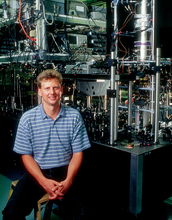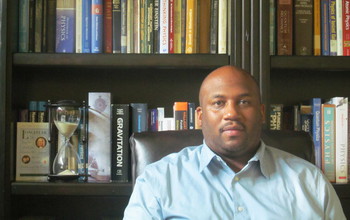All Images
Research News
Precious time

The cesium fountain clock at the United Kingdom's National Physical Laboratory is considered to be among the most accurate timekeepers in the world. Kurt Gibble from Pennsylvania State University worked with Krzysztof Szymaniec, who built the clock, to help assess and improve upon its accuracy to make it an even more accurate atomic clock.
Credit: National Physical Laboratory, United Kingdom
Download the high-resolution JPG version of the image. (537.7 KB)
Use your mouse to right-click (Mac users may need to Ctrl-click) the link above and choose the option that will save the file or target to your computer.

Kurt Gibble and then graduate student Chad Fertig designed and built an atomic clock that uses rubidium instead of cesium. The clock (shown here) is in his lab at Pennsylvania State University.
Credit: James Collins, Penn State University
Download the high-resolution JPG version of the image. (4.6 MB)
Use your mouse to right-click (Mac users may need to Ctrl-click) the link above and choose the option that will save the file or target to your computer.

According to Clayton Simien, an NSF-funded physicist from the University of Alabama at Birmingham, the importance of accurate timekeeping goes back to the early days of sailors struggling to determine longitude to improve navigation. Today's atomic clocks still help with navigation as they are set inside GPS satellites to synch signals.
Credit: Clayton E. Simien, University of Alabama-Birmingham
Download the high-resolution JPG version of the image. (3.3 MB)
Use your mouse to right-click (Mac users may need to Ctrl-click) the link above and choose the option that will save the file or target to your computer.


